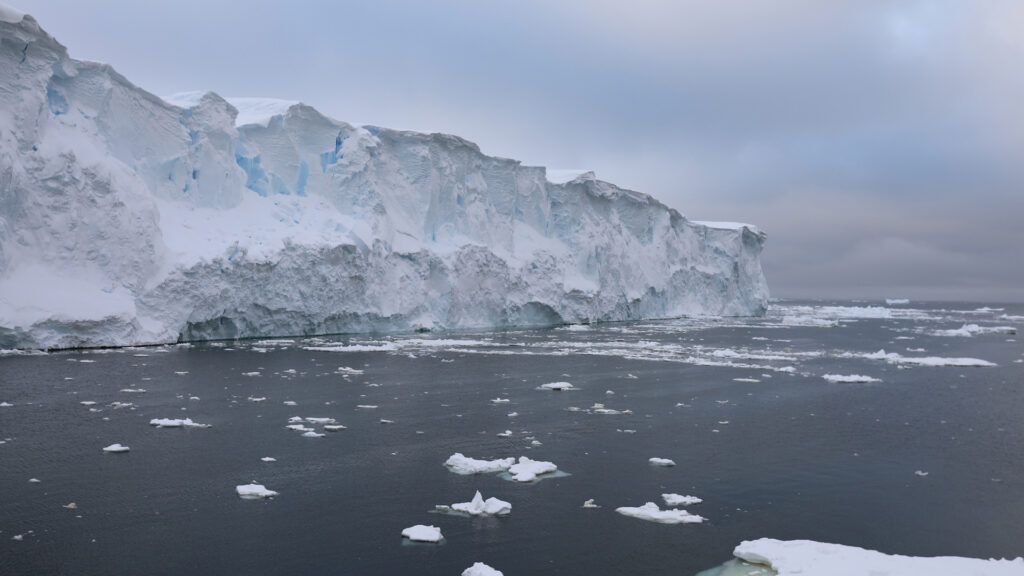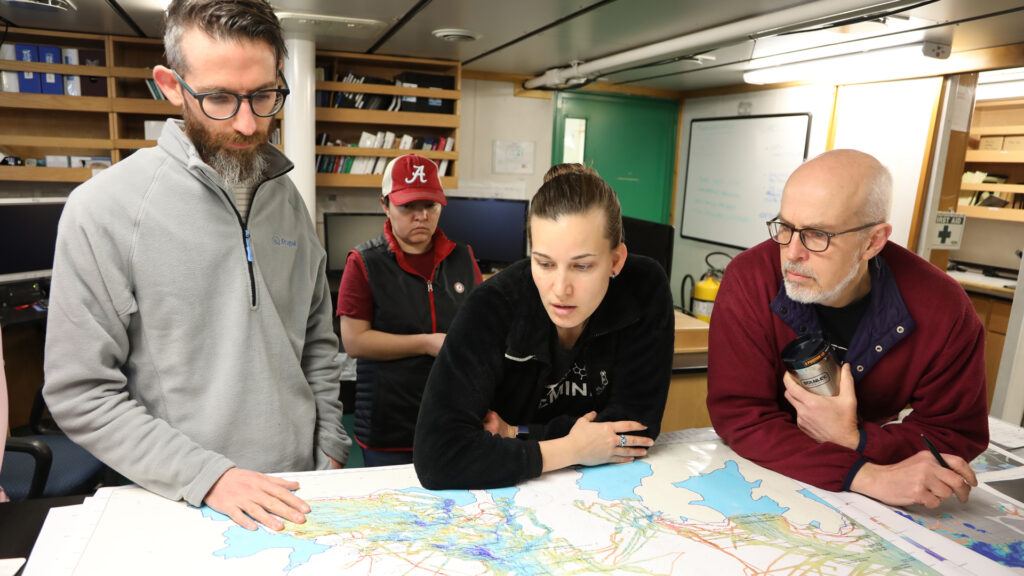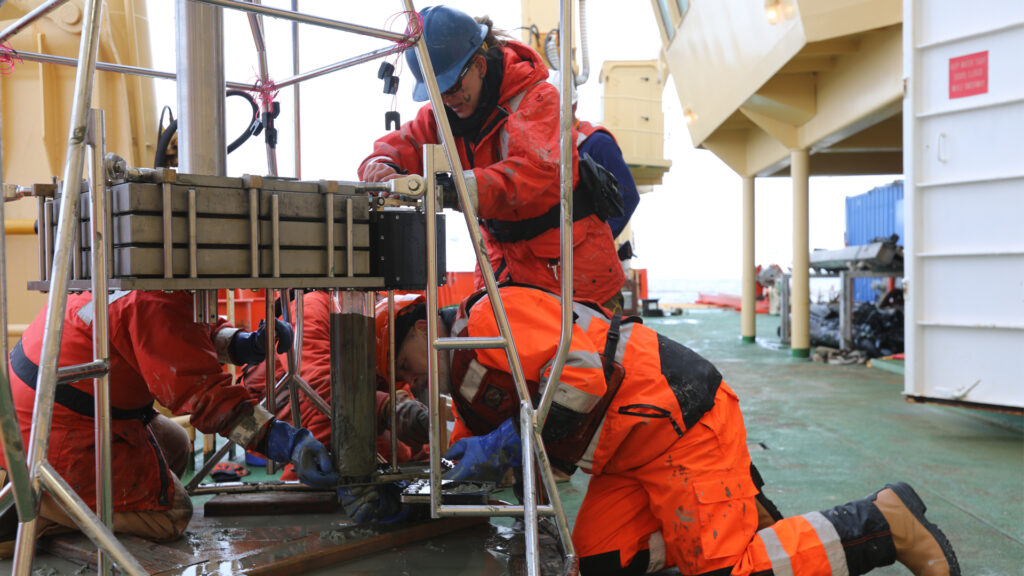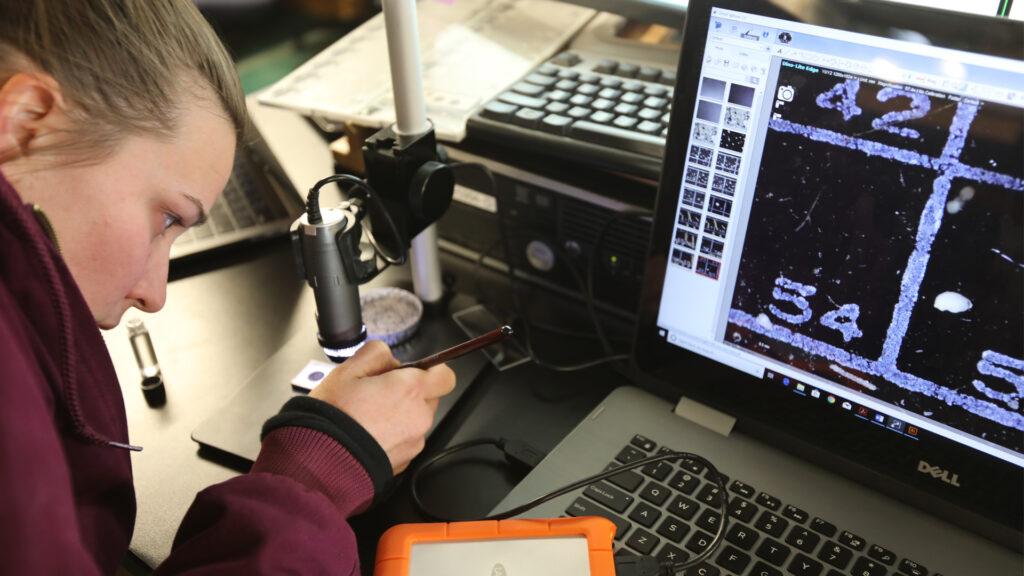
Measuring about 80 miles on the western edge of Antarctica, the Thwaites Glacier is the widest glacier on the planet. But its stability is in jeopardy due to the massive landform losing about 50 billion tons of ice more than it is receiving in snowfall within a year.
Accelerating ice loss has been observed since the 1970s, but it is unclear when this significant melting initiated – until now.
Dr. Rebecca Totten, associate professor in the department of geological sciences, is part of an international, multi-institutional team that discovered the start of the “Doomsday Glacier’s” recent retreat dates to the 1940s. Part of the International Thwaites Glacier Collaboration, The University of Alabama collaborated in the Thwaites Offshore Research, or THOR, team whose findings were recently published in the journal PNAS. The project is supported by the National Science Foundation and the Natural Environment Research Council.

As a paleoclimatologist, Totten served as co-principal investigator on the project and used her expertise in sediments and microfossils to reconstruct climate and ocean changes.
“I led the coring team at sea and described the samples in this study as they were extracted from the seafloor. I look within these sediments for tiny fossils that provide ages of the sediment layers and tell us about the environments surrounding the glaciers, particularly the water current conditions and the sea surface conditions,” Totten said. “This new study, led by the University of Houston doctorate student on the cruise, Dr. Rachel Clark, is focused on the retreat of Thwaites Glacier during the last century, which we reconstructed from measuring the age of the sediment from the seafloor and how it changed from deeper, older layers to today.”
Totten was part of the team’s first expedition in 2019 to collect sediment cores offshore Thwaites Glacier, whose “Doomsday” nickname comes from its potential impact on rising sea levels if melting accelerates.

“When we traveled to Thwaites Glacier in 2019, we had no idea what we would find since it was the first time that area had been free of ice and accessible by ship,” Totten said. “We didn’t know anything about the history of Thwaites Glacier, apart from what we had been able to observe with satellites in the last few decades, which showed rapid thinning of the glacier and loss of ice to the sea.
“This study of the mud layers on the seafloor in front of Thwaites Glacier shows that during the 20th Century, it retreated at the same time as another major glacier, Pine Island Glacier. So, the two largest glaciers draining into this sector of West Antarctica were in sync. This means that large climatic changes are likely the reason for substantial ice loss, especially as the timing of glacier retreat coincides with a major El Niño event.
“This is a major cause for concern as the glaciers continue to retreat very dramatically today.”

According to researchers, Thwaites Glacier plays a vital role in regulating the stability of the West Antarctic Ice Sheet and, thus, global sea-level rise. If the glacier were to collapse entirely, global sea levels are predicted to rise by 25 inches and have an impact on waters close to home.
The findings of THOR will help future models predict sea-level rise across the globe.
“As sea level rises, vulnerable coastal cities like my hometown of New Orleans, as well as other areas like Mobile and South Florida, will need to respond to the threat of inundation, and plan for the impacts of intense storms,” said Totten. “It is very concerning that Antarctic glaciers, which are so far away, have retreated in ways and at rates that we have not yet incorporated into our climate models.
“The dynamics of Antarctica will directly impact the environments where many people live.”
The University of Alabama, part of The University of Alabama System, is the state’s flagship university. UA shapes a better world through its teaching, research and service. With a global reputation for excellence, UA provides a forward-thinking environment and over 200 degree programs on a beautiful, student-centered campus. A leader in cutting-edge research, UA advances discovery, creative inquiry and knowledge through more than 30 research centers. As the state’s largest higher education institution, UA drives economic growth in Alabama and beyond.
Contact
Bryant Welbourne, UA Strategic Communications, bryant.welbourne@ua.edu